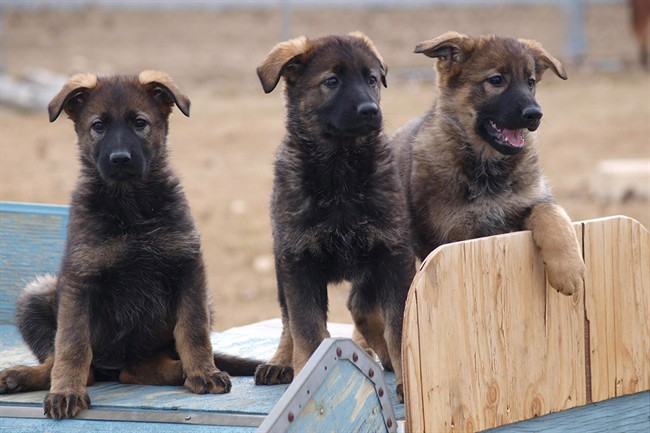The cuddliest member of your family wasn’t always domesticated. New research looking into the origins of dogs suggests that wolves were domesticated twice – in Asia and in Europe.

The new theory comes out of Oxford University – there, scientists relied on genetics and archeological records to piece together their findings.
They say that dogs were the first domesticated animal. Their origins stem from wolves that interacted with people, likely because of the food people carried with them, they allege.
“We were slightly surprised,” Dr. Laurent Frantz, the study’s lead author, told the Associated Press. That’s because, conventionally, domestic animals have a single origin.
READ MORE: What dogs can teach us about jealousy
The guess is controversial: previous studies concluded that dogs were domesticated just once. Scientists can’t decide where this happened, though – in Europe, Central Asia or East Asia, for example.
This time around, Frantz looked at DNA sequences from ancient European dogs that lived up to 14,000 years ago and compared the data to the DNA of 605 modern wolves and dogs of different breeds from Western Eurasia and East Asia.

Get weekly health news
Turns out, there are two distinct splits between dogs from these two regions. The researchers guess that the wolves and domesticated dogs from Asia are different from their counterparts in Europe.
READ MORE: Can puppies help you fight cancer? New study hopes to find out
Asian dogs may have travelled west along with humans, and replaced or interbred with the European dogs, creating a new population that bonded with humans, too.
- B.C. teen in critical condition in hospital with 1st presumptive human case of bird flu
- With B.C. teen sick in hospital with suspected bird flu, what should parents know?
- Bird flu: What we know about Canada’s 1st human case detected in B.C.
- Veteran mental health highlighted on Remembrance Day: ‘It’s hard to say I’m not OK’
The genetic makeup of some dogs matches this theory, Frantz said. The Greenland sledge dog and the Siberian husky appear to possess mixed ancestry from both Asian and European dog lineages.
Feedback from the study is mixed. One critic suggests the “story is still a bit of a muddle.”
But others are embracing the theory.
READ MORE: Science provides a reason why you can’t resist those puppy dog eyes
“If people in one place got these fantastic dogs, of course everyone wanted to have them. Over the course of a few hundred or a thousand years, you could have dogs spread throughout all of Eurasia,” Dr. Peter Savolainen, a geneticist at the Royal Institute of Technology in Sweden, told Science Mag, the news site of the journal Science.
The full findings were published Thursday.
With files from the Associated Press
carmen.chai@globalnews.ca
Follow @Carmen_Chai






Comments